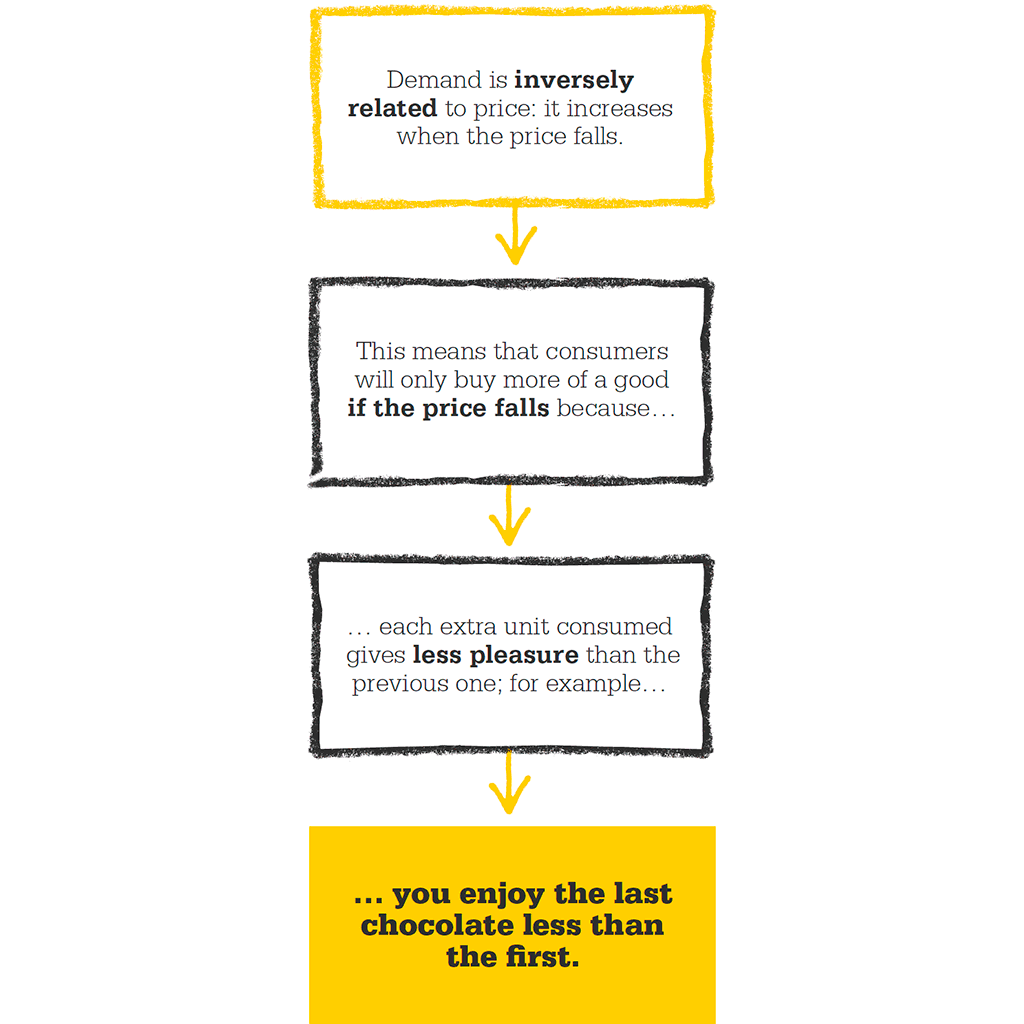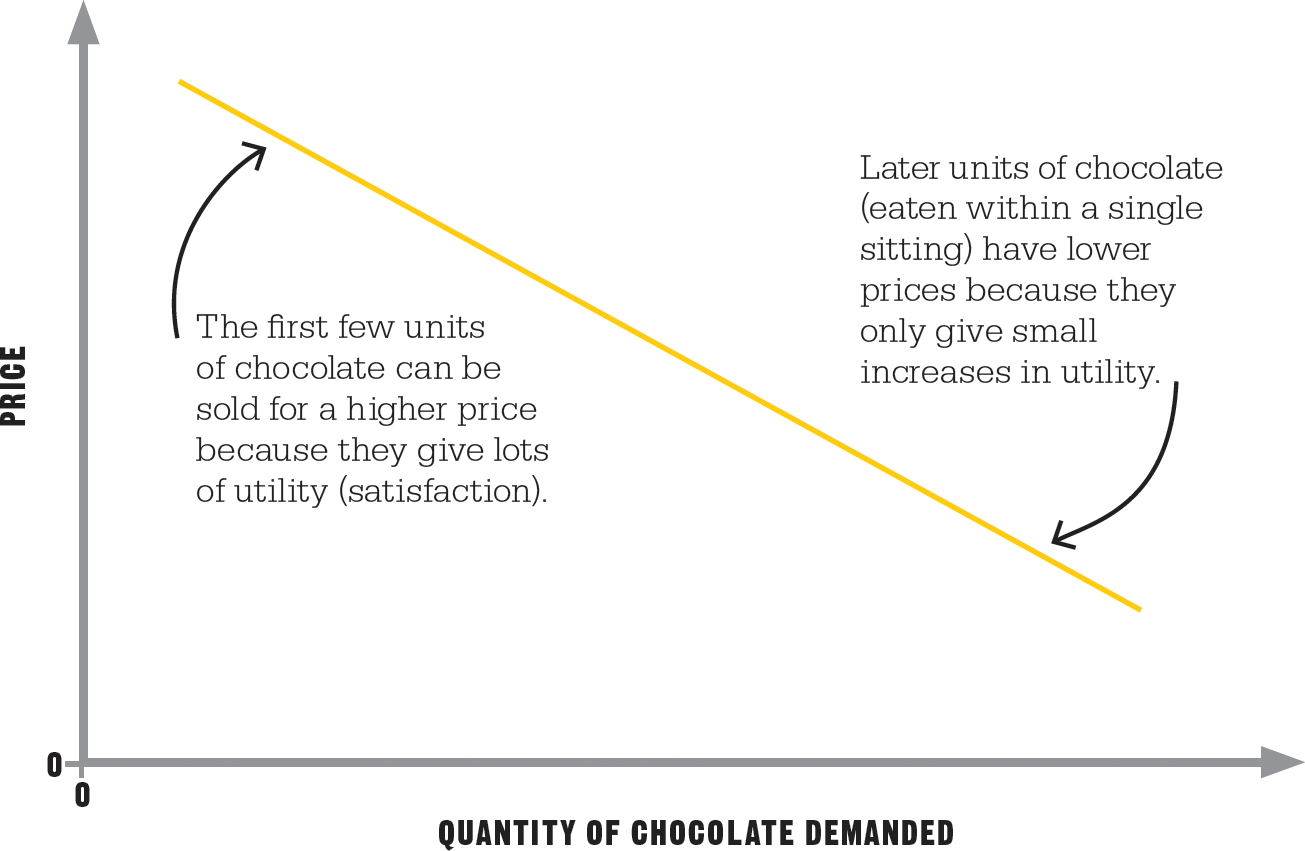

Theories of value
William Jevons (1835–82)
1871 Austrian economist Carl Menger is credited with the theory of diminishing marginal utility in his book Principles of Economics.
1890 British economist Alfred Marshall creates the demand curve using marginal utilities in his Principles of Economics.
1944 US economists John von Neumann and Oskar Morgenstern extend utility theory to situations with uncertain outcomes.
1953 In The Behavior of Rational Man at Risk, French economist Maurice Allais demonstrates how people behave differently from the way utility theory predicts.
Aristotle was the first person to observe that too much of a useful thing would be no use. The idea that the more we consume of a product, the smaller the increases in satisfaction we receive has become enshrined in economic theory as the law of diminishing marginal utility (DMU). Marginal refers to changes on the “border,” such as eating one more chocolate. Utility is the “pleasure or pain” in the decision to consume. In his Theory of Political Economy (1871), British economist William Jevons showed that utility could be measured in a way that relates to the quantity of the commodity available.

The concept of DMU became more important as economists struggled to understand what determines the price of commodities. If everyone generally agrees that each extra chocolate adds less utility, then it makes sense that we will only demand extra chocolates if the price falls, because additional chocolates will give less pleasure—so we will only buy them if they cost less. The resulting demand is negatively related to price, and this, along with supply, helps to determine the equilibrium or “natural” price of a chocolate.
There are many notable exceptions to the law of DMU, such as finding the last piece of a puzzle, which is very satisfying. Addictive goods, such as drugs or alcohol, also seem to be exceptions—the more they are consumed the more they are enjoyed. The principle also makes certain assumptions, such as “consumption should be continuous.” Eating a whole box of chocolates at one time, for instance, is more likely to demonstrate the principle of DMU than eating them spaced out over a day.
DMU has important applications, not least in justifying a more equal distribution of income to create greater welfare for society. If the government was to take $1 from a very wealthy person and give it to a very poor person, the total utility of society should increase.
Utility theory has been extended to situations in which individuals have to make decisions in the face of uncertainty and risk. In this case they make decisions on the basis of their preferences over goods and their assessments of the probability of different outcomes. In the 1950s the US mathematician Leonard J Savage showed how different people make different choices—decisions are affected not only by the different levels of utility people attach to commodities, but also by their comfort with risk: risk-averse people make choices that minimize the level of risk they face.

The concept of diminishing marginal utility is evident in the inverse relationship of supply and demand. The more of a product an individual has, the less he or she is prepared to pay for each unit of it.

Born in Liverpool, England, in 1835, William Jevons was the son of an iron merchant. He developed an interest in economics from his father, who wrote about legal and economic matters. In 1855, his father’s firm collapsed, and money worries forced William to cut short his study of natural sciences at University College London (UCL) and work in Australia as an analyst. Five years later he returned to UCL and completed his studies.
In 1863, Jevons became a tutor in Manchester, where he met and married Harriet Taylor. The family moved to London in 1876, when Jevons took a professorship at UCL. Despite struggling with ill-health, he was a prolific and important writer in the fields of economics and logic. He is famous for creating a logic piano, an early mechanical computer that could analyze the truthfulness of an argument. He accidentally drowned in 1882, aged only 47.
1865 The Coal Question
1871 The Theory of Political Economy
1874 Principles of Science